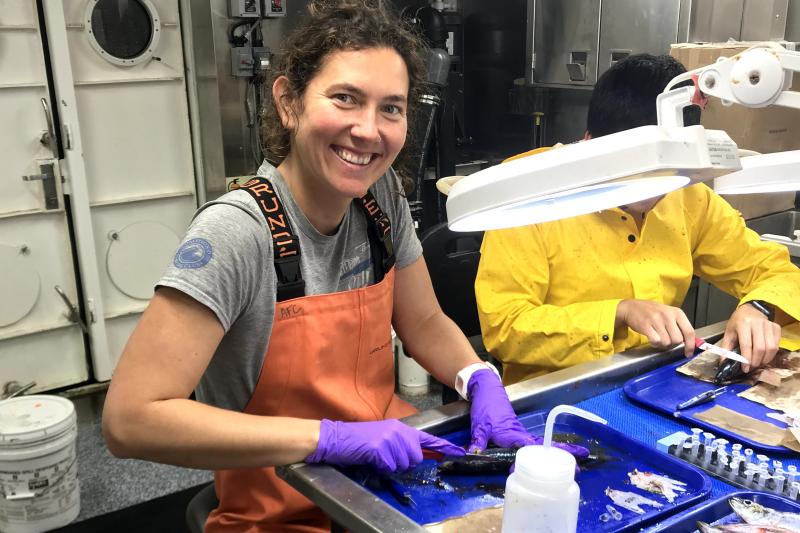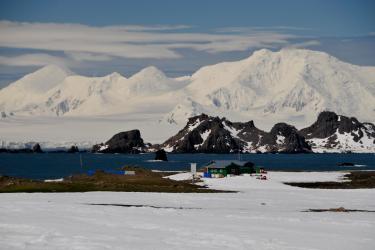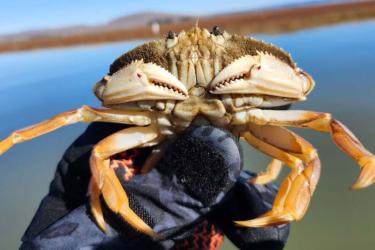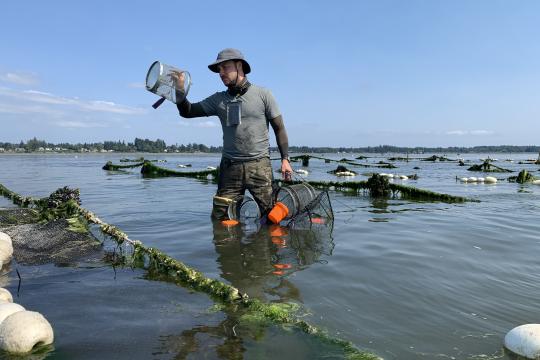What is your key responsibility?
I work in the ichthyoplankton lab sorting plankton samples collected from CalCOFI and Coastal Pelagic Species surveys. I also participate on spring and summer coastal pelagic surveys collecting biological data from adult fish used for stock assessments.
Where do you conduct your work?
At the science center in La Jolla. I conduct field work off our coast on a NOAA ship, anywhere from Vancouver Island to San Diego.
Where did you grow up?
I grew up in Aracaju, Sergipe, located in the northeastern part of Brazil on the coast. The name of the town comes from Tupi-Guarani, the local indigenous language, and it means "the cashew tree of the parrots.”
What is your educational background?
I earned my B.S. in Biology from UC San Diego after transferring from Chaffey Community College in Rancho Cucamonga, CA.
Is there a book, quote, or person that influenced you to be the person that you are today?
This is a difficult question because there are so many good answers. First off, my family, especially my mother, have had a big influence on my values and how I approach life. My mother moved to Brazil in the Peace Corp in the 1970s and has made her life’s work helping low-income people with developmental disabilities. Her courage, dedication, and outlook on life is such an inspiration for me.
Also, I love the writings of the Brazilian poet, philosopher, psychologist, psychoanalyst and public policy consultant Vivane Mosé. She is one my favorites because she has a beautiful way of using art and philosophy to bring humor and insight to current events.
Professionally, William Watson and Dr. Noelle Bowlin introduced me to the world of larval fishes, and Larval Lab members at the SWFSC shared with me the wonders of teamwork.
What do you like to do outside of work (i.e. a hobby, craft, community organization, travel, etc.)?
I love surfing, gardening, jam skating on roller skates, and spending time with my furry and non-furry family.
Can you tell us a little about how you came to the Science Center?
When I was finishing up my bachelors degree at UC San Diego, my teaching assistant at the time, Noelle Bowlin, happened to be working at the Science Center. She told me about a volunteer opportunity on the SAKE (Sardine and Hake) survey and I wanted to learn more.
I participated on the SAKE survey and then started volunteering in the Ichthyoplankton lab with Sherri Charter doing sample curation. A few months later I was fortunate enough to be hired as a plankton sorter. What was really cool about the volunteer work was that I got to experience different parts of the science process at the larval lab from sample collection to sample curation. While I now work on sample processing, I really enjoy and appreciate all parts of this process and am so happy that Noelle got me connected to the center!
What does Hispanic Heritage Month mean to you?
This Hispanic Heritage Month I am thinking of all of those who helped me find home away from home since I moved here more than 15 years ago. From a familiar greeting to a deep conversation about finding one’s identity as a Latinx living in the United States, I appreciate each one of the people who have supported me along the way.
Do you have a story or recipe to share with us?
Since I come from the land of cashews it's my duty to show you what the cashew fruit looks like. The "nut" is the kidney-shaped formation growing at the end and the fruit are very juicy and pulpy, often made into juice.








